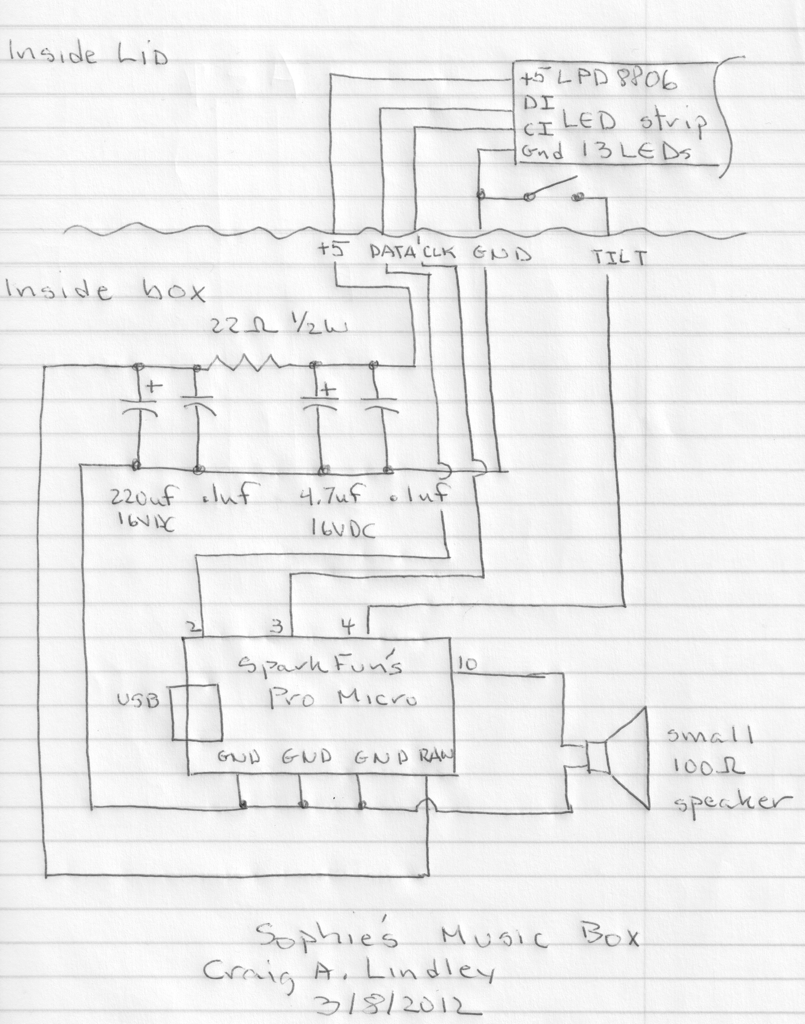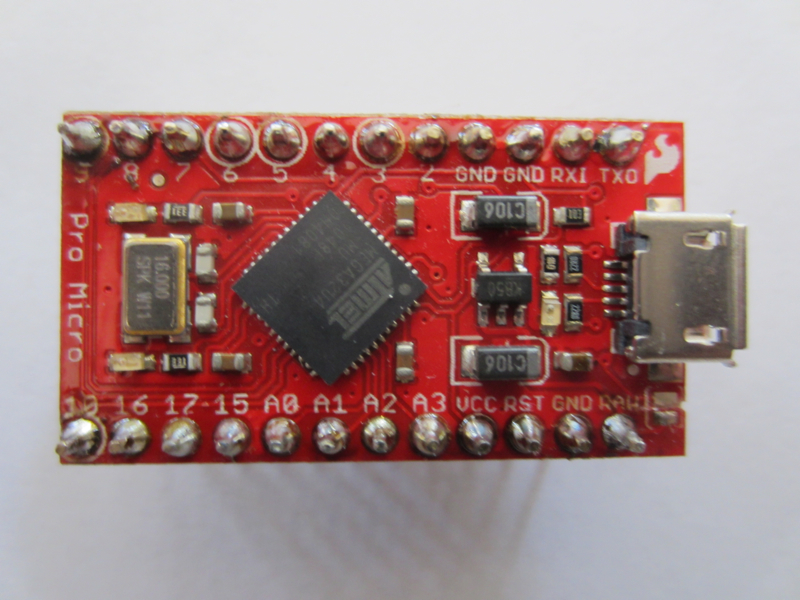
|
This is the tiny SparkFun (sparkfun.com) Pro-Micro Arduino
compatable microcontroller board which powers the music box. This is
about the size of two postage stamps.
|
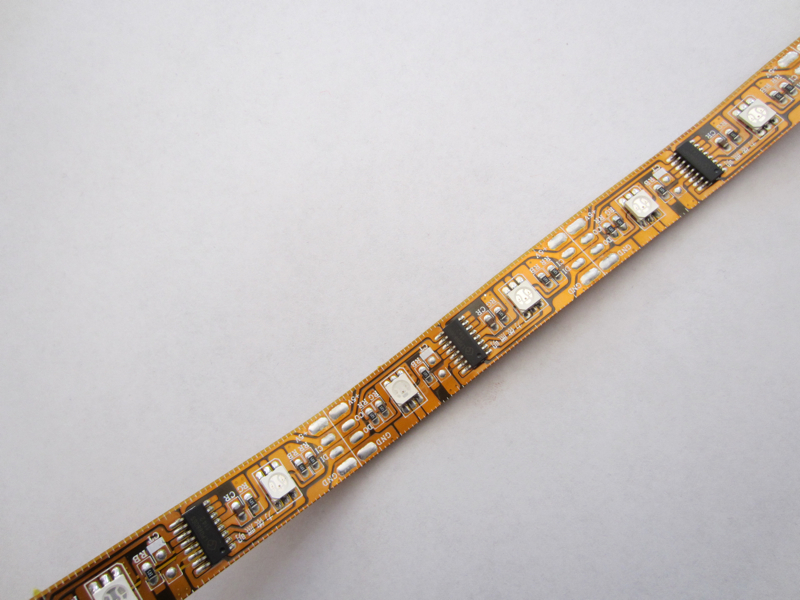
|
This
is a section of the AdaFruit (Adafruit.com) LPD8806 RGB LED strip. I
used 13 LEDs for Sophie's music box.
If you use more or less LEDs, the Arduino stetch will need to be
modified.
This strip is nice in that it has its own PWM circuitry which lessens
the load on the microcontroller
|
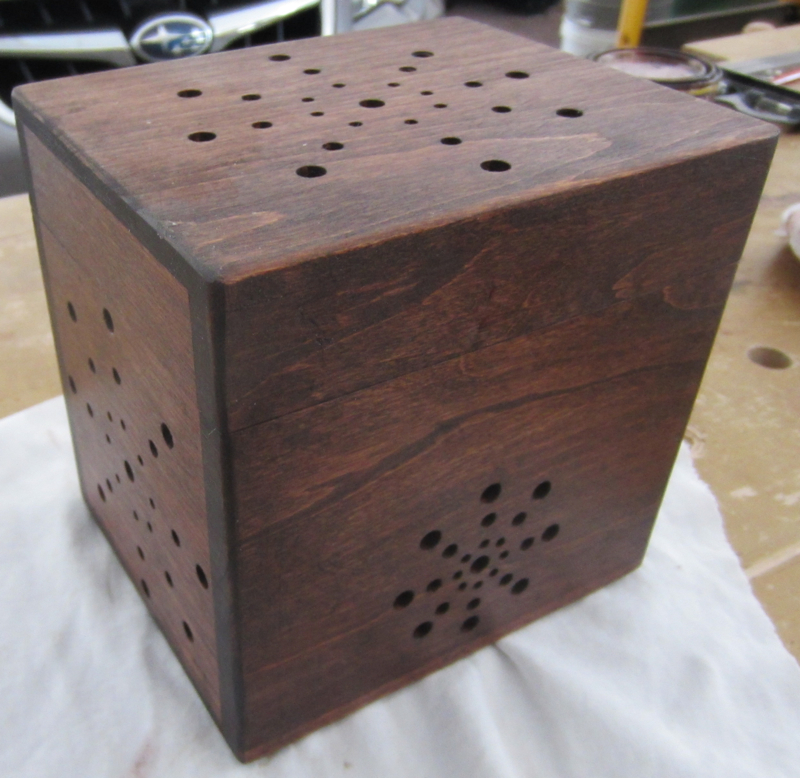
|
Here
is the finished box after I drilled holes all over it and stained it
with mahogany stain.
I thought the drilled holes kinda looked like snow flakes.
|
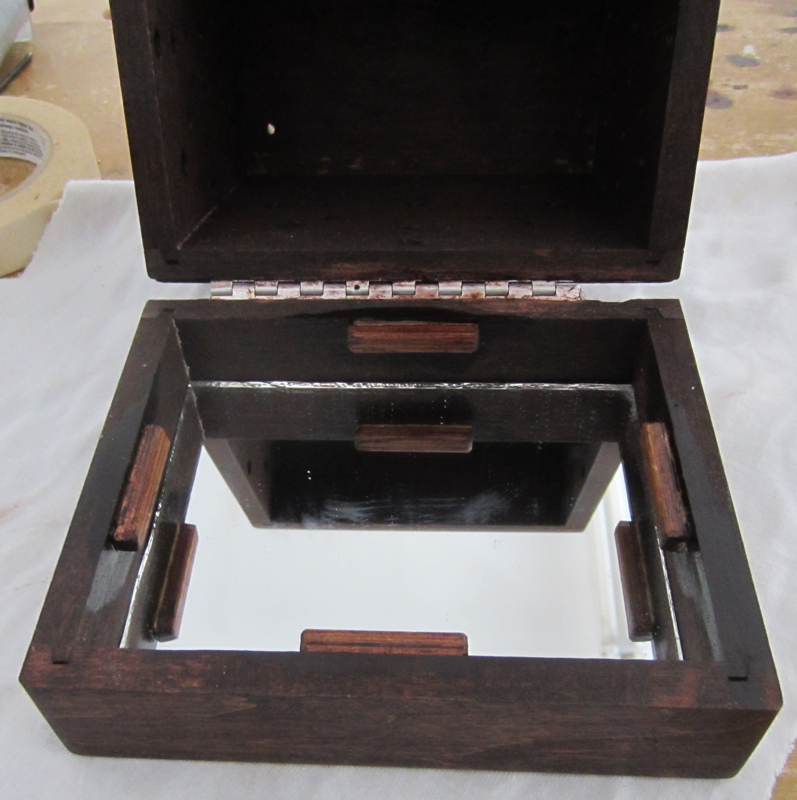
|
Here
you are looking down on the lid of the music box. I placed a mirror in
the back to reflect the light from the LED strip which will be glued in
place between the mirror and the four wooden supports.
|
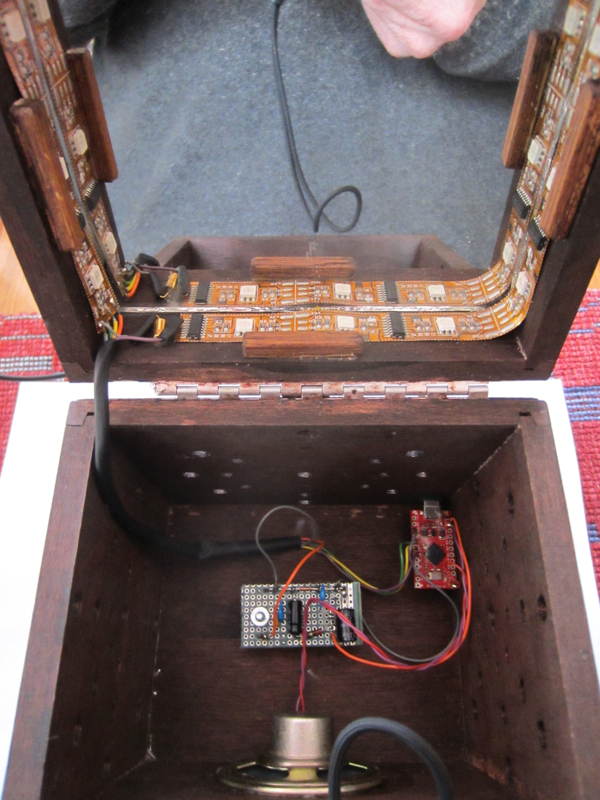
|
This
picture shows all of the electronic in the music box. In the lid you
see the LED strip and the tilt switch (gold cylinder on the left near
where the wires from the lid go into the box) which was also glued in.
Inside the box you can see the small speaker glued to the front, the
little power supply circuit which I built on a piece of pref board and
the Pro Micro microcontroller board.
What you cannot see is there is a hole in the back of the music box for
a USB cord which plugs into the Pro Micro to provide power.
|
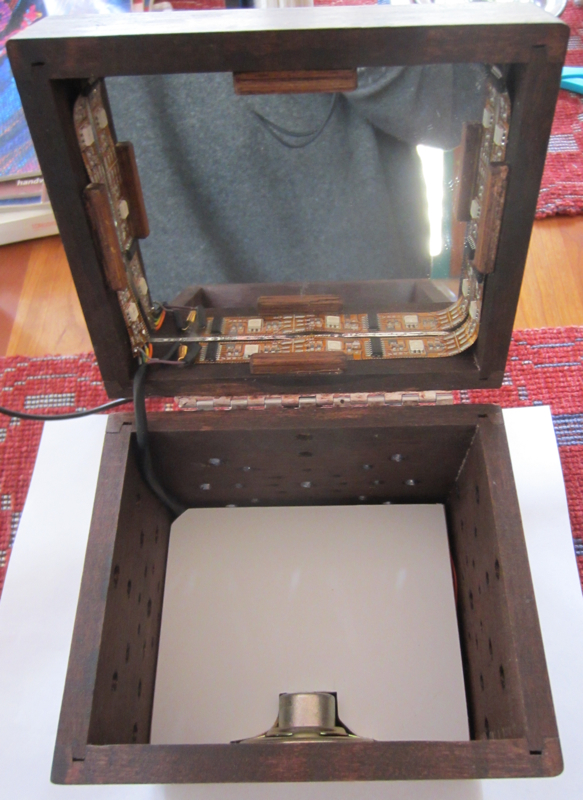
|
I
built a platform that protects the electronic from harm. I had to
sculpt out a portion of it to accommodate the forward mounted speaker.
I could have mounted the speaker in the bottom facing downward but I
was afraid the music would not have been loud enough. I now know the
volume is sufficient for mounting the speaker in any orientation.
|
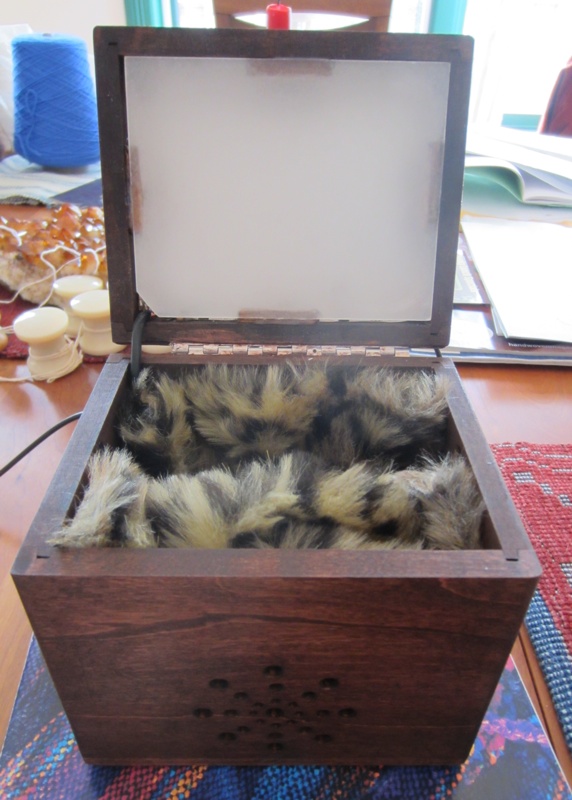
|
Here
is the finished music box. I took a piece of thin lexan plastic and
used my orbital sander to make it diffuse on both sides. I then glued
it to the wooden supports in the lid.
I got some synthetic animal fur to line the inside of the music box
to protect Sophie's valuables.
|







